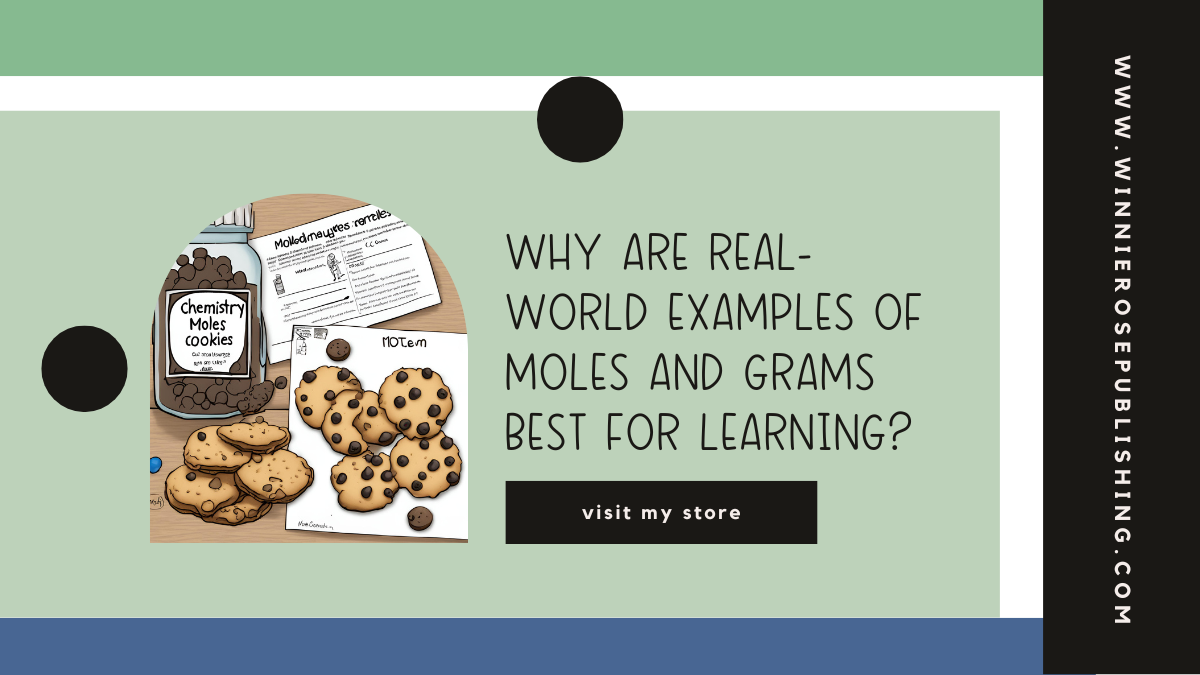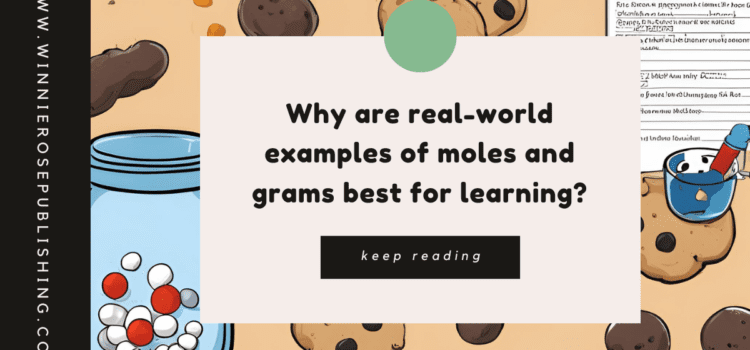
Mole calculations are essential to student learning
You need to teach the kids about moles and grams. As a chemistry teacher, you know the routine. It lays the foundation for so much else. It may be the only concept they vaguely remember years later. But you are almost dreading it. It is so abstract in many ways and you have tried so many methods to get the concept across in a way that will finally stick long enough to get to the unit on stoichiometry and beyond. No matter what you do each year, some kid asks ‘What is a mole, again?’ more than a month after the unit on moles and you are ready to throw up your hands and give up.
Never fear, I have some ideas on pedagogical strategies that should do the trick. The kids will understand moles, be more engaged, and have much fun. And then that leads to the whole thing being more fun for you, too.
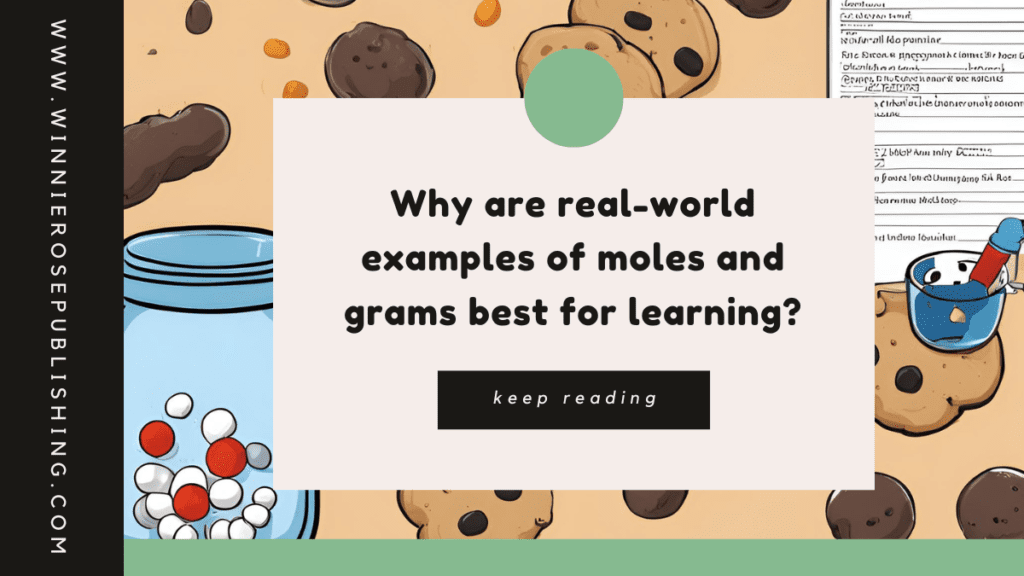
The classic moles and grams conversion worksheet is boring.
You probably have a dozen versions of the classic moles and grams conversion worksheet in your file cabinet. You could pull that out and trundle off to the copy room to make enough copies for your classes. It’s so easy to just use the old worksheet that your predecessor left behind in a wrinkled and coffee-stained folder. Who has time for something creative anyway? The unit on moles and grams is starting in the next day or so… time is running out.
But you know that old worksheet is as boring as the box of tissues on your desk. Flat, colorless, and perfectly serviceable, but you know that if you just had a bit of time and a flash of creativity you could have something better. Maybe your brain and your calendar are so stuffed with the never-ending list of tasks and meetings that you cannot imagine having a creative idea. You are just barely treading water some weeks, right?
The old worksheet will do the job. It has done so for a long time, and it can continue to serve. But be honest with me (and yourself). Are you actually excited about converting 6.4 grams of sodium chloride to moles? Really? Do you think your students are excited when faced with a page of such problems? You know they need the practice, but it is hard to care about that 6.4 grams of sodium chloride. Can they even imagine what this looks like in a beaker? Or if that amount of salt is good for anything?
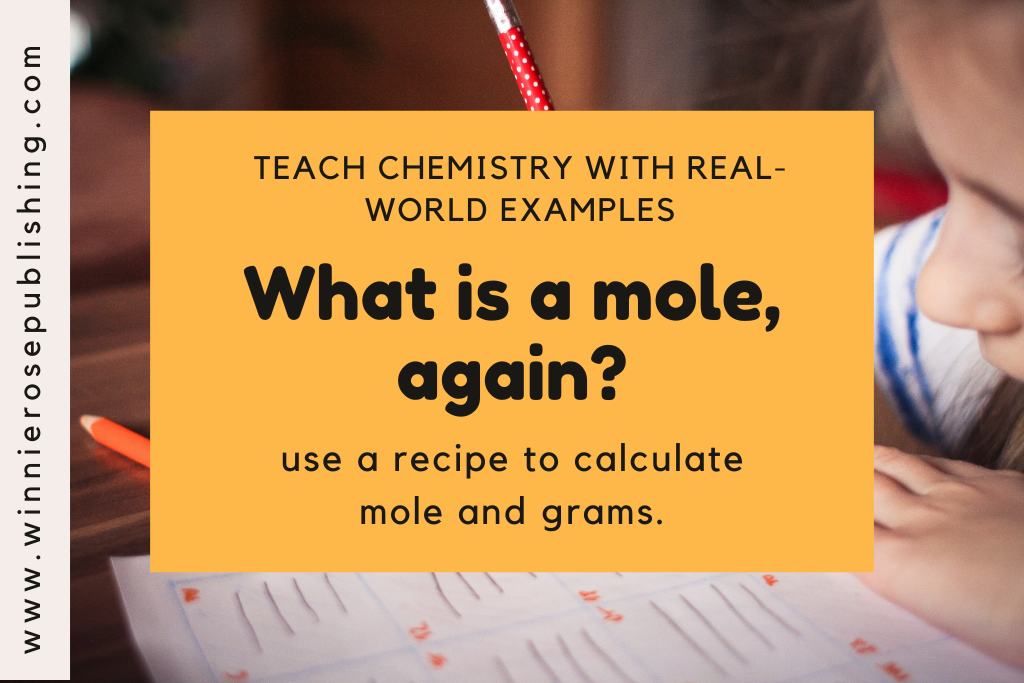
Chemistry in the kitchen allows a real-world connection to content
One universal truth in our world is that people are brought together by food. The cooking of the food, as you recall standing in your grandmother’s kitchen as a young child. The use of food as a celebration, reunion, comfort, or letting go. Food is a unifying experience in every culture and every group. Take advantage of that fact, and tie in the food (and its ingredients) to the chemistry lesson at hand. You can use a recipe as the starting point for finding molar mass and calculating the moles of each ingredient. Use the ratio of the ingredients as an example of Dalton’s Law of Definite Proportions. Use the shopping for the ingredients as a jumping-off point for the stoichiometry lesson.

Use real examples of moles and grams for the entire lesson, not just the intro.
Truthfully, have we not all used the example of the components of a s’more or a double cheeseburger as a way to explain the general idea of stoichiometry? Have you not engaged your classroom in a debate about whether the proper way to make the s’more is with a quarter of the chocolate bar or a full half of a bar? I know I do so every year. But as soon as the intro to the lesson that uses the real-world example leads into the topic, most of us default to the classic problems, and the boring worksheets.
What if all the examples were from chemistry in the kitchen? What if all the practice mole calculations were from food examples? The kids will be more engaged, more responsive, and learning despite themselves. The kids will not come out believing the moles and grams are these mystical, abstract concepts. They will connect to something that they have seen thousands of times. The understanding of the content will skyrocket. The only drawback of such strategies is probably that all the talk of food makes you hungry all day. Don’t just use a real-world example as the hook or intro to a topic. Use those connnections for the practice problems too.
Cooking in chemistry shows students that there is a point to all this.
Recipes include a list of ingredients in a particular ratio, just like John Dalton’s work in the early 1800’s that says that the atoms in a compound are in particular ratios. Chemicals in a reaction are in a set ratio just like in the recipe. We work hard with students to get them to understand that the coefficients in a chemical reaction are for moles and not mass. Using a recipe and converting everything to moles, reinforces the mathematical relationships and helps them understand moles vs grams.
The idea of a mole has always been difficult for most students to conceptualize and the size of Avogadro’s number is too large to comprehend. But when a person thinks about the average number of raisins in an oatmeal cookie, or that all the ingredients need to be scaled up or down to yield a different number of cookies, then things become more concrete and understandable.
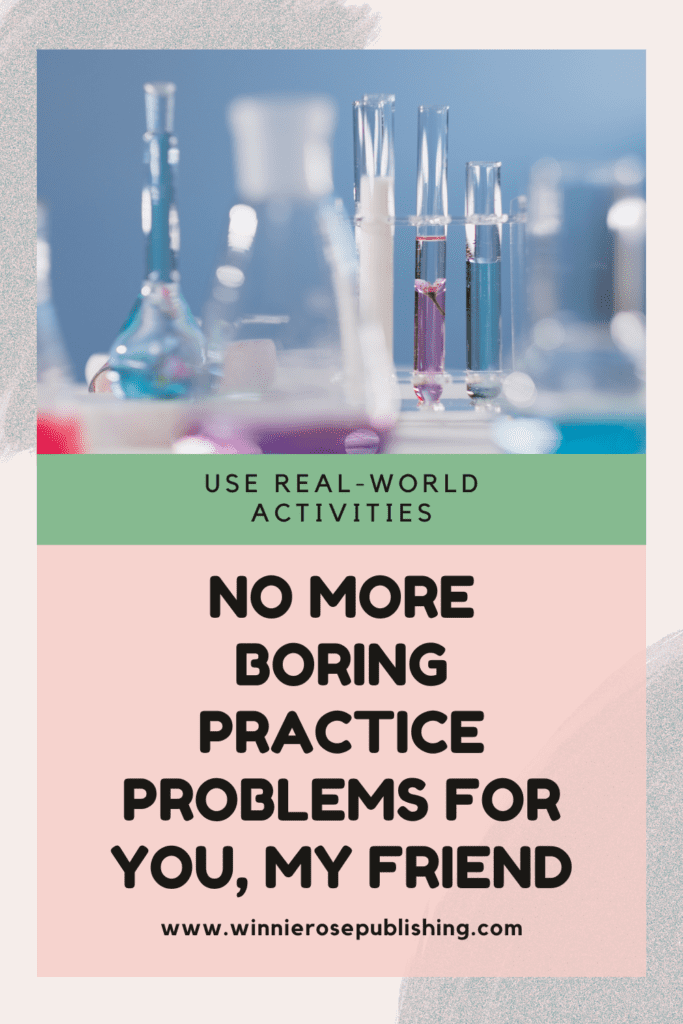
Calculate moles and grams in a compound from a recipe
In Europe, most recipes list the ingredients in grams and milliliters, which makes calculating moles more direct. But some simple conversions from cups to grams will make the calculations straightforward. It is true that most ingredients in the kitchen are not pure compounds – sugar, salt, and baking soda notwithstanding – so when using a recipe for mole calculations, some assumptions have to be made. By assuming that flour is primarily one carbohydrate, and providing that molecular formula, students can start the math with no problem. Other ingredients like oatmeal or eggs also need a bit of simplification.
Use moles and grams and many other chemistry concepts in the kitchen
Using the kitchen and a recipe to teach math and science is definitely not new. As described in the article”How to Teach Math and Science with Cooking,” you can teach younger kids about counting and ratios with a recipe. The process of cooking invokes chemical reactions and there is an opportunity to tie things to the states of matter. Some creative people with some kitchen equipment in their classroom have taught about the scientific method by changing the recipe and finding how that impacts the results. That is brilliantly described in the post “Cooking with Science – Lab with Chemistry and Recipe Variations.” The kids looked like they were having quite a bit of fun.
The National Inventors Hall of Fame agrees that recipes lend themselves to teaching science in this post – “Fall in Love With STEM Through Cooking” which talks about ways to engage students in using chemistry and math as they navigate a recipe. If your situation does not allow cooking in the classroom, an activity on paper that uses a recipe for oatmeal cookies to practice calculating moles and grams will work well too. Perhaps you and the consumer sciences teacher need to collaborate to make those cookies while you teach chemistry.
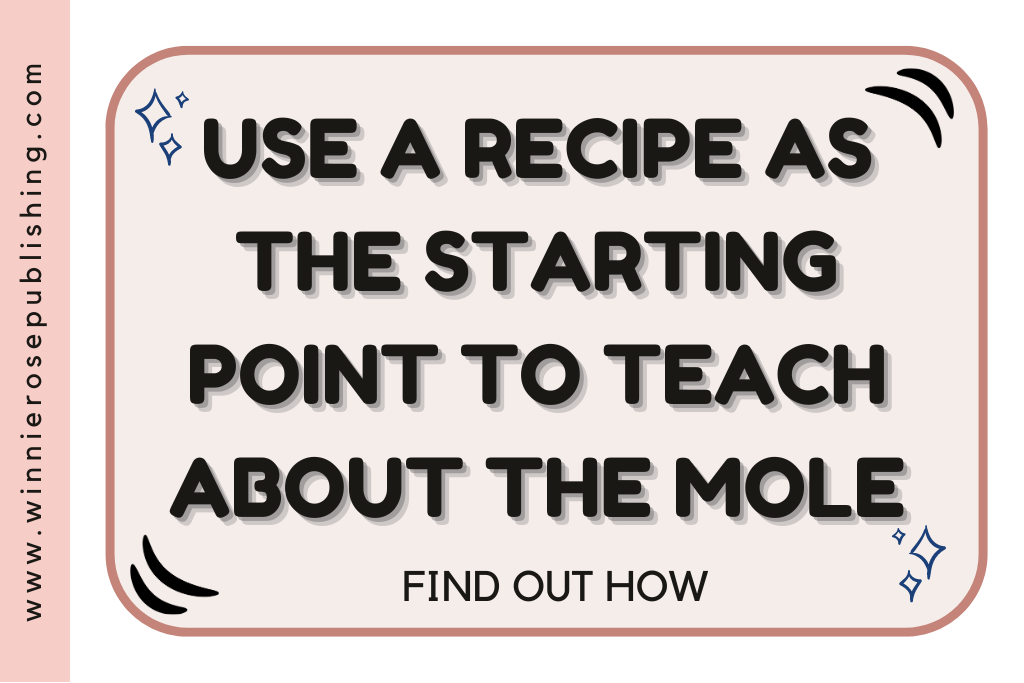
An old-fashioned moles and grams calculation practice worksheet just won’t cut it anymore.
You and I both know that anyone can make a worksheet with dozens of random examples to calculate moles and grams and numbers of molecules. But are you convinced that the average high school student cares one bit about how many moles are present in 40 g of sugar? Do you think they care at all about how many sodium atoms that 40 g of salt would contain? Of course, you can make a worksheet with random examples in nothing flat. Of course, you could make dozens of such worksheets. But are you enthused about having a make an answer key and solutions to that worksheet? Are enthused to grade that worksheet?
If you are not excited or enthused, then I can promise you that your students are not either. Class will be more fun and students will be more receptive when the examples are real. Forcing yourself and them to go through the motions because it is ‘good for them’ is unnecessary and sad. Why do that to yourself or them again?
Students will love chemistry in the kitchen and may not even realize they are learning.
The best class periods are when students are so engaged with the material or interested in the activity that they don’t look at the clock during class. They feel a sense of achievement when they figure out the mystery or solve the puzzle. They can imagine the materials on the worksheet without resorting to the old-fashioned ‘plug and chug’ methods. It makes the class period go better for everyone.
Do you need an activity for moles and grams in a recipe? This oatmeal cookie activity will do the trick. And if your class is not too large, you could even bring some cookies for the kids to eat while completing the worksheet. Then later on in the semester, you can come back to the cookie recipe and use it for stoichiometry calculations.
Of course, any activity that includes a real-world example that students can relate to will improve their understanding. It helps younger students build an understanding of an abstract concept by linking it to a concrete, everyday example. And, for so many reasons it is worth thinking about the kitchen as you approach the moles and grams and Avogadro unit in your class.
